Route of the Czars
A trip from October 11 through October 20, 2006
| St. Petersburg and
its suburbs |
|
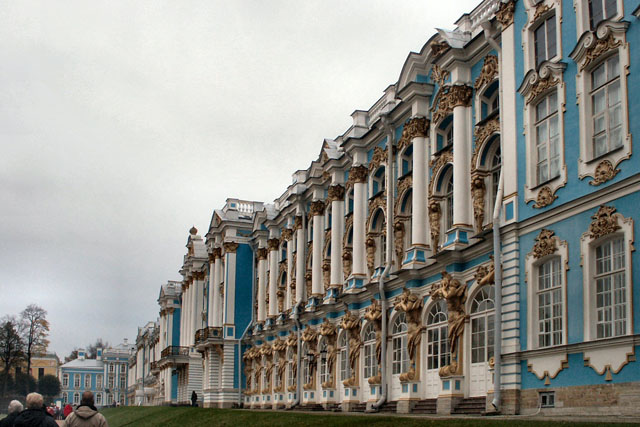 |
Pushkin
is a town north of St. Petersburg, which was founded as "Royal
Village," and it had two major palaces. The Catherine Palace is
shown here, and it is known as the "Summer Palace." This palace
was constructed by Catherine I, not Catherine the Great, in 1717.
It was used as a summer palace by Catherine I, Elizabeth and by
Catherine the Great, but she built a more restrained wing for her own
use. After the October Revolution, this became a museum. During the Siege of Leningrad, it was occupied by the Germans, and they trashed it so there was nothing left but the outside walls. Now it has been largely restored. |
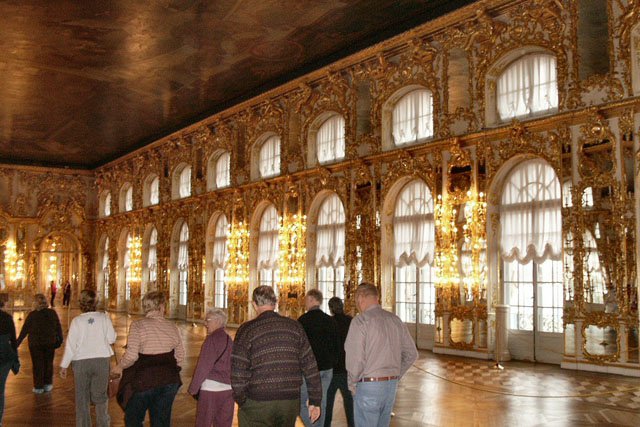 |
Versailles
has the "Hall of Mirrors." This palace has the "Hall of Lights,"
a grand ballroom, about 10,000 square feet of space. Over the
past few years it has hosted high profile concerts and parties. |
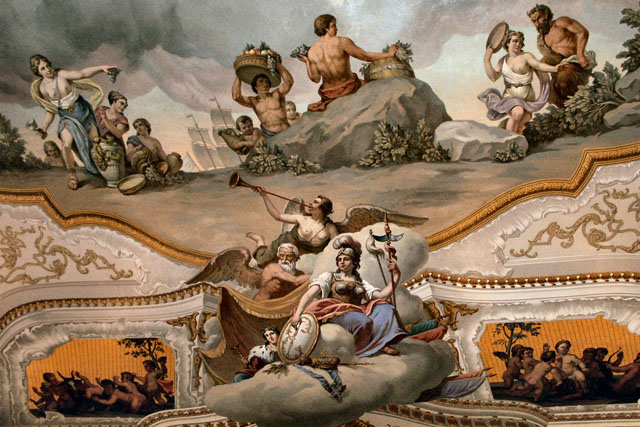 |
The ceilings in the Catherine Palace are spectacular. |
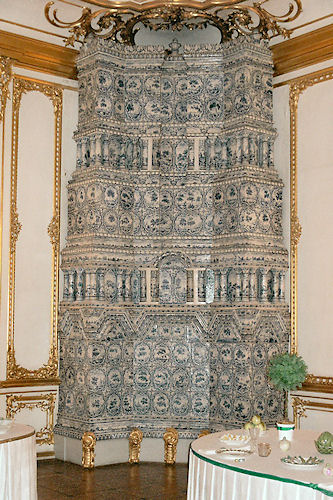 |
This huge ceramic piece is a space heater, and it is not so much different from equivalent heaters in Western European palaces. |
| This series of formal rooms is known as the Golden Enfilade, and it is a reproduction of the original, including the Amber Room. |
|
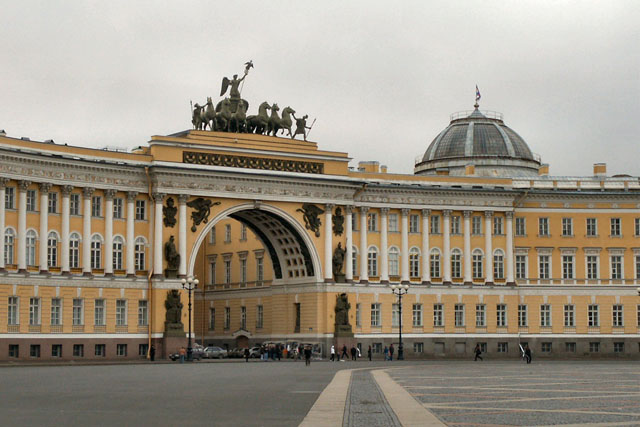 |
If
the big name in Moscow is Ivan the Terrible, but the big name in St.
Petersburg is Peter the Great. He tried to create St. Petersburg
in the style of the best he saw in his travels to Western Europe in
1697 and 1698. This is the General Staff Building, built by Alexander I around 1820, long after Peter's time. It celebrates a victory over Napolean. |
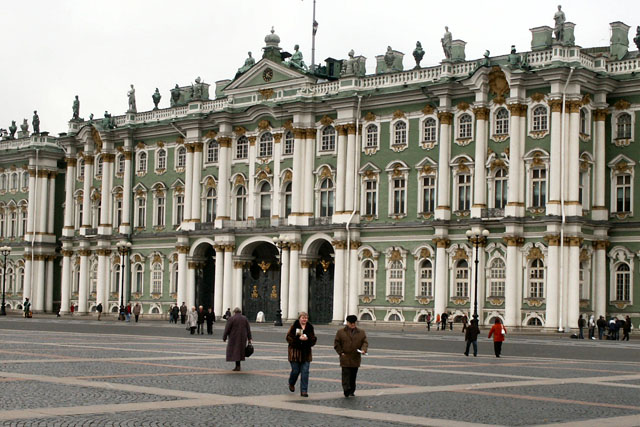 |
The
best known institution in St. Petersburg is The Hermitage. This
started as the Winter Palace, completed by Catherine the Great in
1762. Shortly after that, she started collecting art, and the
collecting has been going on more or less ever since then. This
is just a across Palace Square from the General Staff building. |
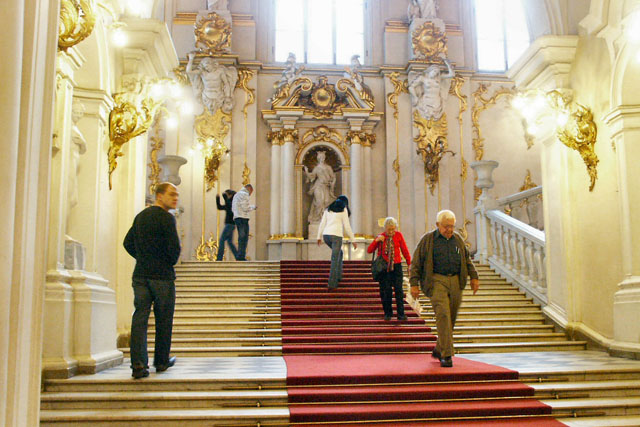 |
This
stairway shows the palatial origin of the Hermitage. The Winter
Palace alone has more than 1000 rooms, and it looked like much was
still being renovated. It was easier to get lost than find a
restroom. |
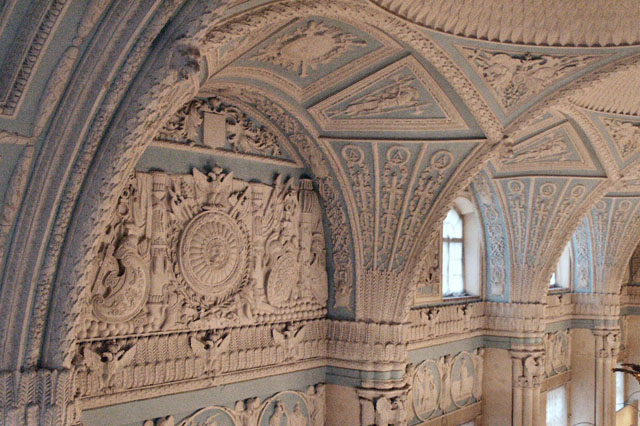 |
While
the Hermitage State Museum has about 3 million art works, the building
itself is frequently an art work. While there is a lot of art on
view, much of it is shown in dark, crowded rooms. |
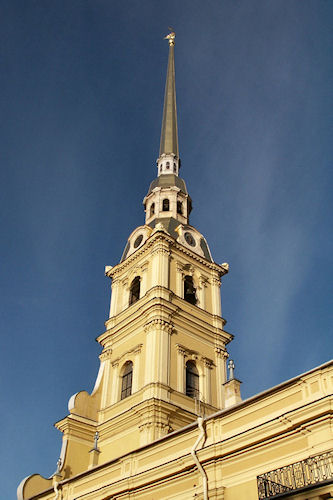 |
The Cathedral of Saints Peter and Paul was built in 1712,
sponsored by Peter the Great. This is the oldest building in St.
Petersburg. It is within the Fortress of Peter and Paul on
Zayachy Island in the Neva River. This spire could have been designed by Christopher Wren. |
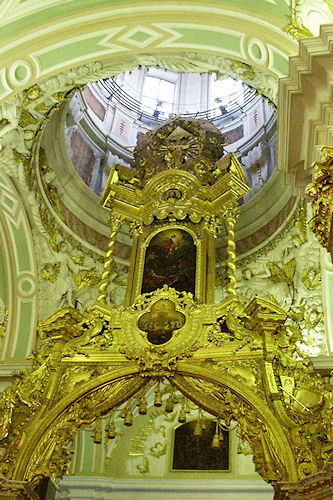 |
Lots
of gold and baroque in St. Peter and Paul, which holds the tombs of all
the emperors and empresses from Peter the Great through Nicholas II. |
| This
side chapel houses the recovered remains of Nicholas II and his family,
all of whom were executed by the Bolsheviks in 1918. |
|
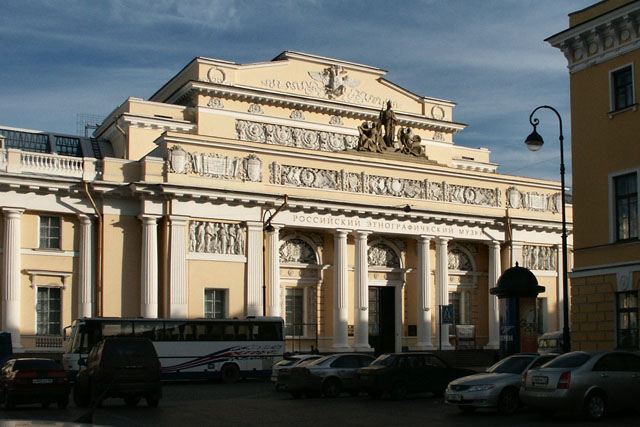 |
This classical revival building is the Museum of the Russian Peoples. |
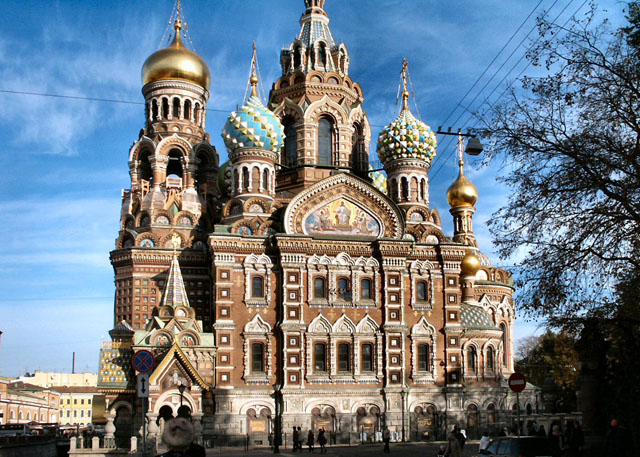 |
The
Church of the Savior on the Blood is a Moscow style building, built on
the site where Alexander II was assasinated. This building
survived the Stalin years as a warehouse. This is a remarkably
modern building; its constuction was done between 1883 and 1907. |
| St.
Petersburg has the Neva River, and it also has a network of
canals. There are not enough canals to make it like Venice, but
they are pleasant to watch. |
|
| The
Smolny Convent was built to house Elizabeth, daughter of Peter the
Great, because she was not allowed to become Empress of Russia.
However, a coup in 1741 changed all that, and she became a tsarina, not
a nun. The Italian born architect, Rastrelli, designed this, the
Catherine Palace and the Winter Palace. Rastrelli was a master of
the baroque. |
|
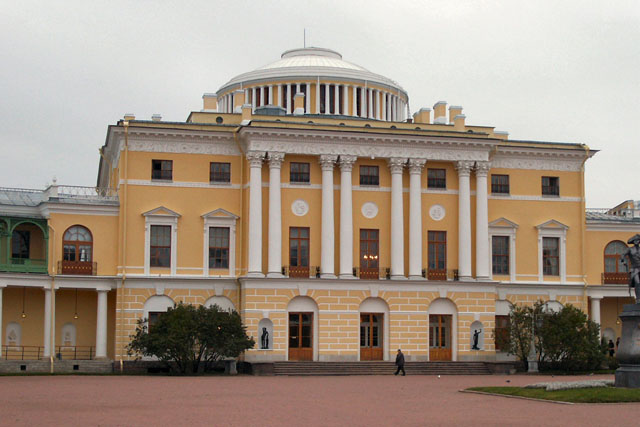 |
Pavlovsk
Palace is another suburban palace, placed in a huge, English-style
garden. It dates to about 1780, although it burned in 1803, it
was rebuilt. It was built by Paul I (Pavel) before he became czar
in 1796. |
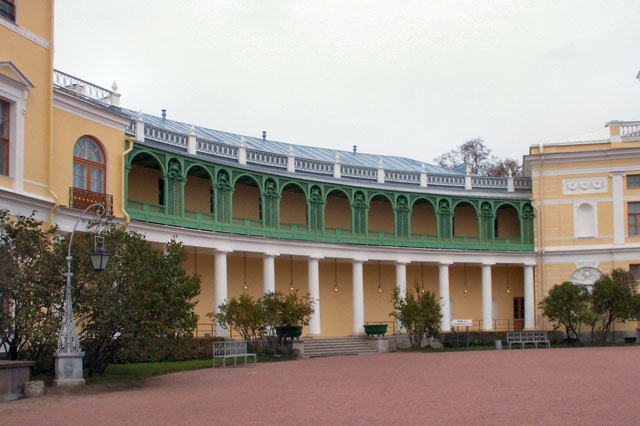 |
The architect for this palace was Cameron, who was much more restrained than Rastrelli. |
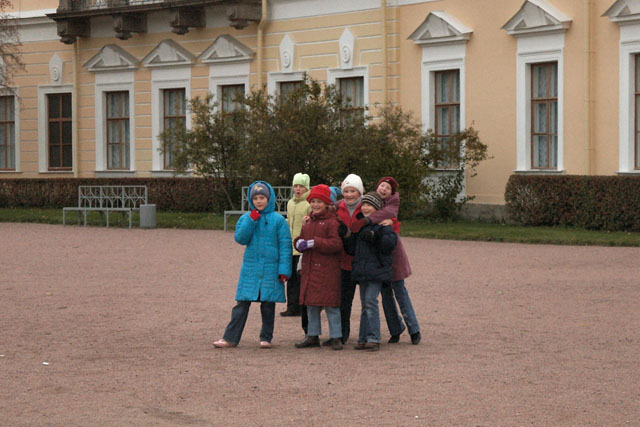
| While we waited to get in, a group of school childred arrived. |
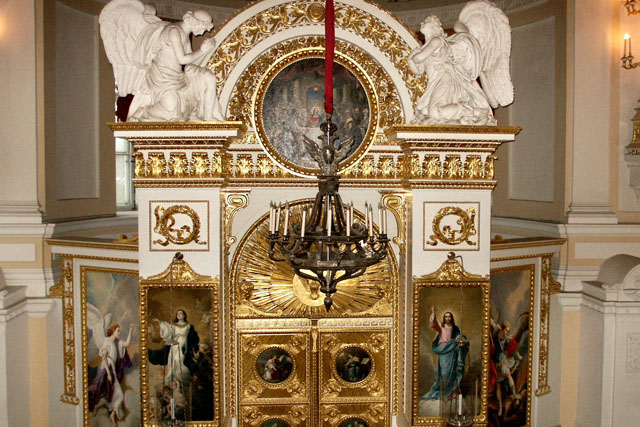
| Cameron's restraint notwithstanding, this chapel gets pretty close to baroque. |
| And it makes sense to end the trip with a sunset. This is a view over Lake Onega. | |
| Back to Home |
Back to Waterways | Back to Top |